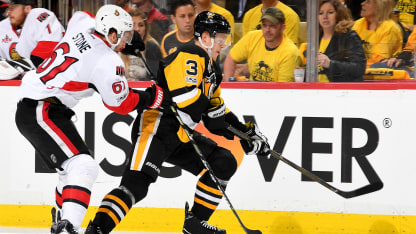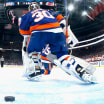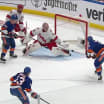Pageau blocked Kessel's first shot, but the puck went right back to Kessel, who scored against Senators goaltender Craig Anderson on a low glove-side wrist shot from above the hash marks.
"It's a rush chance, but it wasn't like Ottawa got caught on the rush," Corsi said. "But they were backing up and the Penguins were coming at them. The Senators neutral-zone gap has to be better addressed."
One way to do it, Corsi said, is for Ottawa to have more of a chip-and-forecheck mentality. He said they were guilty in Game 2 of giving the Penguins the puck back without much pressure against them.
That was different in Game 1, when the Senators outshot the Penguins 32-17 at even strength and had a 49-34 edge in 5-on-5 shot attempts. In Game 2, the Penguins outshot the Senators 27-22 at even strength and had a 47-29 advantage in 5-on-5 shot attempts.
"In Game 1, when they got those shots, it was off of a wide entry as opposed to a chip in the middle," Corsi said. "What Ottawa does quite well is they have curled entries. So they'll go wide, curl up and look for somebody inside or put it behind the net. They get the puck, everybody is looking inside, and Ottawa can go board pass to the point man, point man 'D' to 'D' and they'll bring a high forward into the top of the circle. But that was happening less and less and less in Game 2. Part of it was that it was a chip and chase entry as opposed to a chip and forecheck entry or a wide entry.
"Ottawa, to get out of it, more so than ever, has to command more of the neutral zone."


















